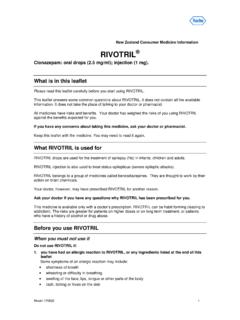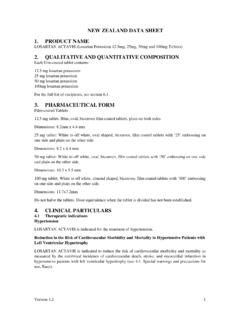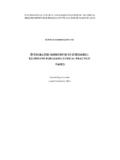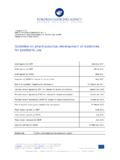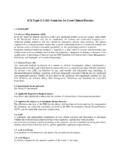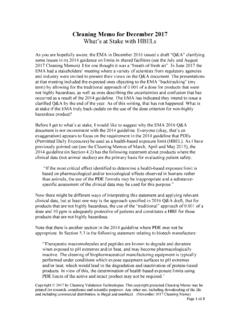Transcription of Guideline on the Regulation of Therapeutic …
1 Guideline on the Regulation of Therapeutic Products in New Zealand Part 10: Requirements for information for prescribers and consumers Edition March 2021 Guideline on the Regulation of Therapeutic Products in New Zealand - Part 10 - Edition Page 1 Contents Contents 1 Section 1: Legislation .. 2 Legislation relating to data sheets 2 Legislation relating to CMI 2 Section 2: Data sheets .. 3 Introduction 3 Who is responsible for supplying and maintaining data sheets? 3 When is a data sheet required? 3 General requirements for data sheets 4 Preparing a data sheet for a generic medicine .. 5 Format and style consistency in data sheets 5 Use of electronic bookmarks and hyperlinks .. 6 Submitting a data sheet for approval 6 Submitting an approved data sheet for publication 6 Publication of data sheets 7 Notification of publication 7 Maintenance of data sheets 7 Changes affecting only data sheets.
2 7 Auditing of published data sheets 8 Removal of data sheets from the Medsafe website 8 Data sheets for previously unavailable medicines 8 Section 3: Consumer Medicine Information .. 9 Introduction 9 When is CMI required? 9 Who is responsible for preparing CMI? 10 Preparing CMI 10 Content required in CMI .. 10 Language .. 11 General requirements for CMI 11 Submitting CMI for publication 11 Notification of publication 12 Removal of CMI from the Medsafe website 12 Complaints procedure 12 Advertising the availability of CMI 12 Guideline on the Regulation of Therapeutic Products in New Zealand - Part 10 - Edition Page 2 Section 1: Legislation Legislation relating to data sheets The following legislation should be read in conjunction with Section 2 of this part of the Guideline : Medicines regulations 1984 Part 10: Data Sheets ( regulations 51-53) Legislation relating to CMI There is no legislation specifically relating to the requirements for CMI.
3 This Guideline should be read in conjunction with Part 2 of the Guideline and should not be read in isolation. Section summary This section identifies the legislation relating to the preparation and publication of data sheets and Consumer Medicine Information (CMI) for New Zealand health care professionals and consumers. Guideline on the Regulation of Therapeutic Products in New Zealand - Part 10 - Edition Page 3 Section 2: Data sheets Introduction A data sheet contains information relating to the safe and effective use of the medicine. Data sheets are reviewed by Medsafe and subsequently approved by the delegate of the Director- General of Health. Part 10 of the Medicines regulations 1984 sets out the requirements for the preparation, approval and publication of data sheets. Who is responsible for supplying and maintaining data sheets? Medicine sponsors are responsible for the preparation of data sheets and ensuring that they are kept up-to-date.
4 Data sheets are supplied to Medsafe for publication on Medsafe s website. When is a data sheet required? An approved data sheet is required for every prescription medicine and restricted medicine for which the Minister s consent for distribution in New Zealand has been granted. Data sheets are not required for pharmacy-only or general sale medicines, unless the Director-General has specified that a data sheet should be provided pursuant to a notice issued under section 36 of the Medicines Act 1981. However, some general sale or pharmacy-only medicines are also prescribed. It is desirable for the sponsor to provide data sheets for these medicines especially if they are prescribed regularly. A proposed data sheet is required to be submitted as part of the New Medicine Application (NMA). A draft revised data sheet should be submitted with the Changed Medicine Notification (CMN) for material changes that affect the data sheet.
5 Section summary This section: provides detailed guidance on the preparation of data sheets explains when and how draft data sheets should be submitted for approval explains when and how approved data sheets should be submitted for publication. Guideline on the Regulation of Therapeutic Products in New Zealand - Part 10 - Edition Page 4 Draft data sheets should be submitted in electronic format together with the NMA, CMN or Self- assessable Change Notification (SACN). Medsafe will approve the data sheet when issuing consent to the changes for the CMNs that are not self-assessable. Data sheets are not required for related products. Medsafe will not review, approve or publish data sheets for related products. Information in the data sheet must match the approved details in Medsafe s Therapeutic Products Database Record (TPDR), including shelf life details. General requirements for data sheets Sponsors should note the following when preparing a data sheet.
6 Data Sheets should follow the data sheet template (see Section ). Include the heading Data Sheet at the top of the front page of each data sheet. If marketing a medicine under two or more trade names, each trade name product requires a separate data sheet. Provide separate data sheets for different dose forms, strengths and formulations of the same medicine where this promotes safe use of the medicine. In any situation, the data sheet should make it clear as to the use of the dose form or strength. List formulations of a medicine that have been approved, but are not yet marketed with a qualifier statement that notes the medicine is not currently available. The data sheet must not refer to brands of medicines that are not approved in New Zealand, as this constitutes advertising of unapproved medicines. Use the active ingredient name or International Non-Proprietary Name when referring to any other medicine in the data sheet.
7 If a medicine has the potential for individual differences in bioavailability, the data sheet must include advice regarding switching between formulations or brands and the need for individual patient monitoring if switching is unavoidable. For biosimilars, refer to the Medsafe policy ( ). Indications in the data sheet should reflect the clinical trial population and the ages for which the medicine is approved. All dosages for the approved indications in the data sheet should be attainable with the approved strengths of the medicine. Do not include or use promotional statements in data sheets. Do not include bibliographic references in data sheets. Only include registration or trademarks in data sheets where their use does not adversely affect the layout of the data sheet. Guideline on the Regulation of Therapeutic Products in New Zealand - Part 10 - Edition Page 5 Use the term medicine to indicate a Therapeutic substance.
8 In New Zealand, the term drug indicates a substance of abuse. The sponsor must provide New Zealand contact details including a New Zealand phone number in the data sheet (under heading 8 Sponsor). Include the date of revision in the data sheet, which is to be the date the sponsor prepares the changes to the information in the data sheet. This is not the date the data sheet is submitted or acknowledged by Medsafe. The only exception to this is the date of approval for new data sheets. Proof-read the draft data sheet before submitting. It is the responsibility of the sponsor to ensure that the data sheet does not contain spelling, grammatical or typographical errors. Where Medsafe encounters such errors in a submitted data sheet, Medsafe will require a Self-Assessable Change Notification to be submitted to correct the errors. Preparing a data sheet for a generic medicine The data sheet for the generic medicine should use the New Zealand innovator product as the reference for the indications, dose and safety information.
9 If there is no innovator product on the market in New Zealand the sponsor should contact Medsafe to identify the correct indications and dose. The sponsor should use the innovator overseas as the reference source for safety information, and not the New Zealand market leader Data from bioavailability studies should not be included in the data sheet. However, the data sheet for complex products such as biosimilars should include results from relevant comparative studies that can help clinicians with their prescribing decisions. The sponsor should discuss any differences with the reference medicinal product . Format and style consistency in data sheets Data sheets published on the Medsafe website are to be in a standardised format so that users can find information easily. Sponsors should use the Data sheet template (and the Data sheet template explanatory guide) when preparing their data sheets. A serif font (eg, Times New Roman) is preferred.
10 Section headings should be of font size 14. Normal text should be of font size 11. Bold or italics may be used as required. Tables, bullets and numbered lists may be used as appropriate. The data sheet should be submitted in Portable Document Format (PDF). The document should be set at a security setting which allows printing and content copying. The document should be searchable (NOTE for this reason scanned Guideline on the Regulation of Therapeutic Products in New Zealand - Part 10 - Edition Page 6 documents cannot be accepted). The electronic copy of the final data sheet should be clean and should not include tracked changes, highlights or comments. Use of electronic bookmarks and hyperlinks Section headings and subsection headings should be bookmarked to aid navigation. The data sheet can include embedded hyperlinks to: the sponsor s adverse reaction reporting form the Centre for Adverse Reaction Monitoring (CARM) reporting form the sponsor s contact point (preferably the Contact Us information on the sponsor s web page).





